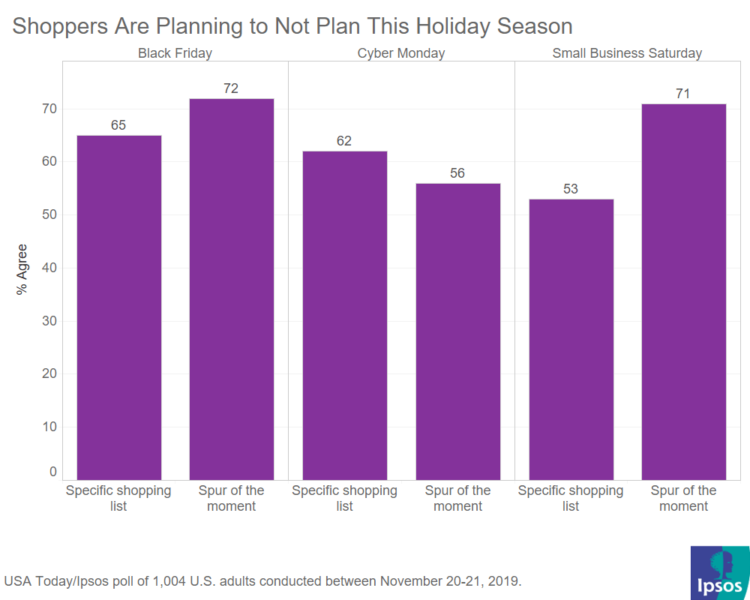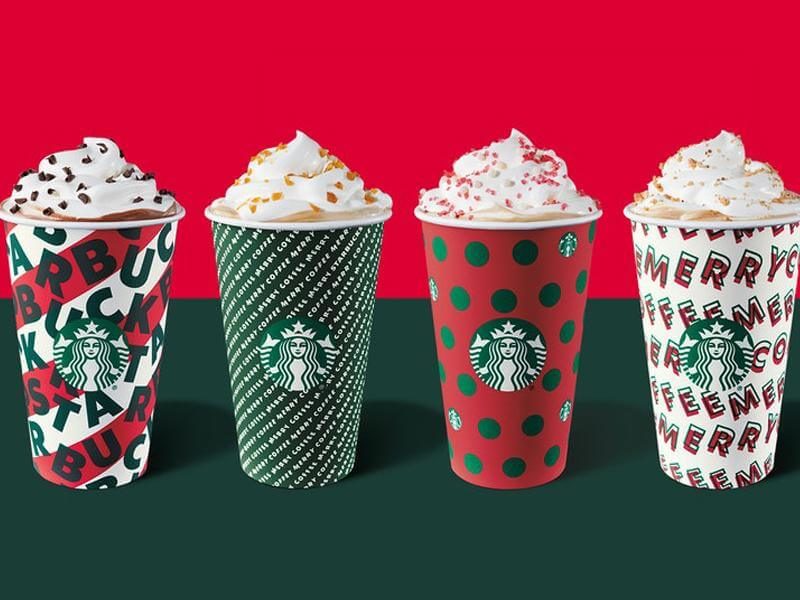Win the brand battle during the holiday shopping wars
Here are five strategies for building the holiday spirit of your brand with captivating communications while also navigating the pitfalls of the season.
“I hate this TV” exclaimed my wife for the hundredth time, “I can never get the sound right.” While annoying to her, this comment cut me deeply; you see, I bought the TV as part of last year’s holiday shopping madness and have been regretting it ever since. Regret may be too weak of a word – as I let myself get duped into switching from the brand I originally intended to buy. This is a big-ticket item, so I did a lot of research. I made a long list of brands that I would consider, narrowed in on specific models, checked reviews and did side-by-side comparisons. Upon deciding, I researched buying options and prices and I knew exactly what I was going to buy (Samsung), where I was going to buy it (Amazon), and how much I was going to pay ($797).
Then I bought something else! I was taking advantage of Black Friday to stock up on some items I use regularly when it happened. The big box retailer was teeming with people eagerly filling their carts with great bargains. As I passed by the TV section, I was stopped in my tracks by a low price on a model that I had considered but dismissed from my long list. Overcome with the emotion of the moment and the idea of getting an immediate bargain on something I could take home that day, I opened my wallet, experiencing the dopamine kick that comes from anticipating my purchase.
The positive emotions gained from my purchase soon waned and the aforementioned regret began to kick-in as I realized – aided by my wife’s reminders – that there were good reasons I had decided not to buy that specific model.
It turns out that I am not alone in being overcome with shopping-mania during the holiday frenzy and convinced to make unplanned purchases. According to Ipsos (my employer), more people expected themselves to make “spur of the moment” buying decisions this holiday season than to stick to their shopping list. Most prospective shoppers (65%) have a list in mind for Black Friday, but even more (72%) say they deviate from it.

We know purchase decisions are impacted by two dynamics, brand desire (what we want) and market effects (in-market factors like price, promotions, and availability). I had a clear desire for my preferred TV brand but was persuaded by the market effects.
During the holidays, the impact of market effects is greater than ever. Bombarded with promotions and driven by the festive spirit, consumers are tempted to reach for convenient or glitzy options, sometimes at the expense of their favorite brands. This is all the truer in the age of one-click purchasing and same-day deliveries.
Despite these challenges, the holiday season steadfastly remains the most important time of year for both consumers and brands. Companies with strong brand equity – built throughout the year – can weather the storm and even capitalize on consumer willingness to try new brands. The surge of emotions that accompany the holidays is an ideal opportunity to forge a lasting connection with consumers new and old alike. As we prepare for this holiday season, keep in mind these five strategies for navigating the pitfalls and possibilities of holiday marketing.
1. The early bird gets the worm
In this fiercely competitive climate, successful brands will build on existing brand equity with a seasonally-appropriate emotional touch. Apple’s 2013 “Misunderstood” is the perfect example of how consistently building equity can pay off when the brand story is bedecked with holiday spirit. In the ad, a teenager is shown butting heads with his family over the time he spends on his phone. The comedy of errors is resolved when it is revealed that he used Apple technology to forge a point around which his family could gather to share memories and create new ones.

The brand’s equity reinforces its positioning as a means of bringing people together, rather than keeping them apart. In turn, the ad’s emotional content, accentuated by seasonal sentimentality, earns Apple a spot in the audience’s heart; right next to their shopping list. Strong positioning is a key part of tapping into holiday purchasing trends, so smart brands will build equity year-round, placing them at the head of the pack when the holiday rush begins.
2. The holidays warm hearts; your brand should too
This time of year, more than any other, consumers are listening to their hearts more than their heads. Ads that are clear, direct, and emotive leverage audience engagement and allow your brand to compete in an environment replete with sentimental ads. Prominence isn’t enough to secure a place in consumers’ minds though. Ads that are too complex, or deliver volumes of information, will be drowned out by the emotional tenor of the holiday season. Simple and emotive ads, like L.L. Bean’s #12daysofpuppies campaign, are far more likely to grab and hold attention while driving consistent engagement.

The much-anticipated seasonal favorite features curated images of particularly adorable puppies on the company’s official social media account. Followers are encouraged to share pictures of their own festive pups, yielding a seasonal event that has tugged on the public’s heartstrings for years and kept the brand at the forefront of holiday-shoppers’ minds.
3. Go back to basics: bring people together
Traditions unite the nostalgic past with the joyous present, giving us a focal point to gather around, to reminisce, and to create new memories. Brands that successfully integrate themselves within these traditions – or develop their own – build salience year after year. Since Starbucks introduced its annual holiday cup designs in 1997, they’ve become an essential part of the holiday season for thousands.

Each winter brings a new design, and with it a new opportunity to collect, critique and – above all – share. Starbucks’ holiday cups have become such an essential part of consumers’ festive experience that the brand has found itself subject to the ire of consumers when designs fail to meet their expectations.
4. Don’t lose sight of holidays present
While appealing to the swell of holiday feelings is a tried-and-true approach, brands are also enjoying success with ads that touch on the more comic sides of the season. In 2018, KFC promoted their fried chicken with a good-natured jab at traditional turkey dinners.

The often-dry bird many of us tolerate only once a year was contrasted with juicy chicken appreciated year-round. The undercurrent of holiday nostalgia persists (family gatherings around the dinner table) but is given a fresh twist by the acknowledgment of a widely-accepted “secret.”
5. How does your brand express holiday spirit?
REI’s #OptOutside campaign puts this concept into practice by urging consumers to enjoy the outdoors on Black Friday, instead of jostling for the newest bit of camping gear. In what has now become a holiday tradition, REI closes its retail locations and reminds consumers through social media that there are alternatives to a day spent in holiday traffic. Participants can share photos of their experience on a specially-designed platform, adding to the sense of festive cheer.

By aligning their messaging with its brand image, REI authentically reinforces the brand’s mission, integrating it seamlessly into consumer’s holiday experience. They’ve also started a meaningful dialogue about the season’s less-cheery side, giving their audience the tools necessary to generate buzz. Being relevant, after all, requires more than taking a stance on current issues. Ultimately though, the holidays are all about tradition, not innovation, and the #OptOutside campaign’s greatest strength lies in its establishment of a new one: gearing up for the holidays with an excursion into the great outdoors.
Fitting into consumers’ holiday stories
The holiday shopping period is fraught with risk for brands as the frenzy provides fertile ground for marketers and retailers to hijack consumer intent at the last minute. Smart marketers and their agencies steel their defenses all year long, entering the battlefield with as much brand desire in the bank as possible, while also taking advantage of the emotive holiday spirit with captivating communications.
Contributing authors are invited to create content for MarTech and are chosen for their expertise and contribution to the martech community. Our contributors work under the oversight of the editorial staff and contributions are checked for quality and relevance to our readers. MarTech is owned by Semrush. Contributor was not asked to make any direct or indirect mentions of Semrush. The opinions they express are their own.
Related stories
New on MarTech